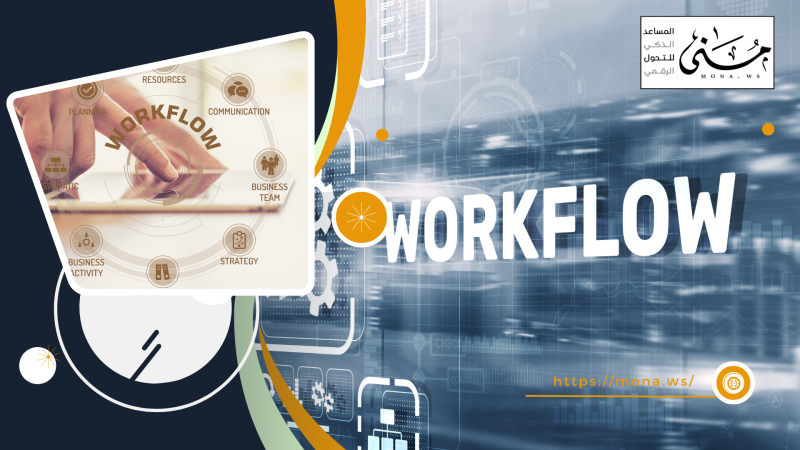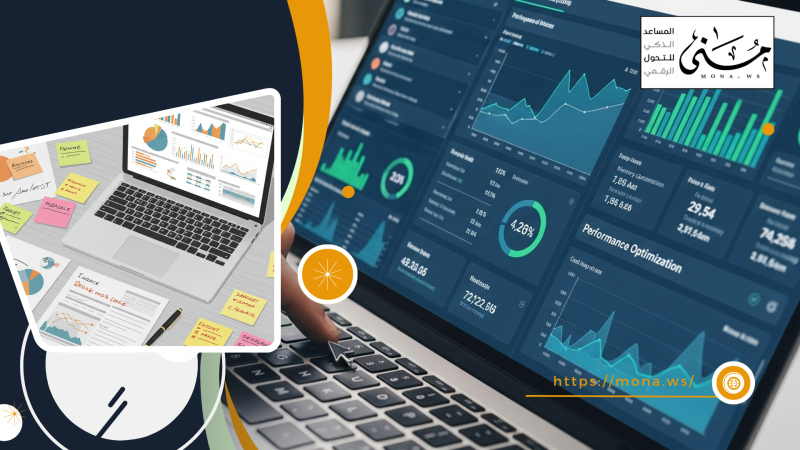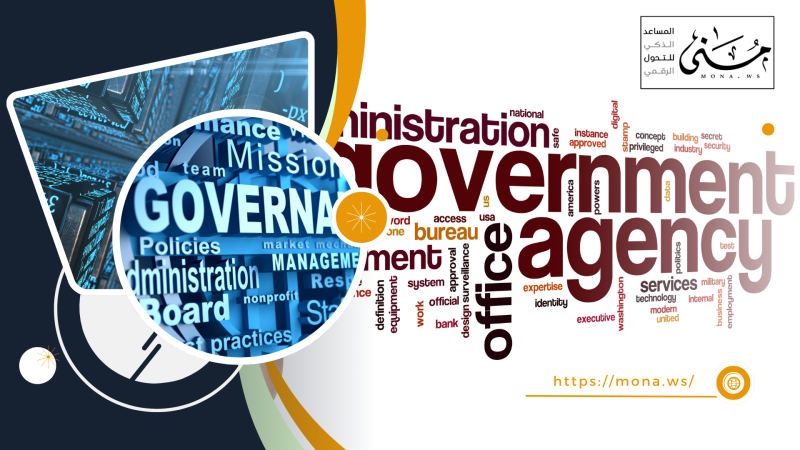Administrative communication systems have come to play a pivotal role in improving institutional performance and enhancing organizational efficiency. Technological transformations have pushed organizations towards adopting solutions based on artificial intelligence to develop the administrative communication system and make it more effective and flexible.
In this article, we will discuss important information that will help you improve your organization's administrative communication system.
What is the administrative communication system?
Administrative communication is defined as the process of transferring information, ideas, and decisions between different levels within an organization, with the aim of achieving effective coordination between departments and administrations and ensuring the smooth running of work. Administrative communication is a vital tool for supporting interaction between employees and management, enhancing transparency, and stimulating teamwork to achieve organizational goals.
Administrative communication involves the use of multiple means and technologies, such as meetings, written reports, emails, and smart applications, aiming to facilitate the exchange of data and making informed decisions quickly and efficiently, with a focus on enhancing internal cooperation and ensuring clarity of organizational vision.
With the development of technology, there is an urgent need to improve traditional communication systems to keep pace with the requirements of the digital age. Here comes the role of artificial intelligence, which can simplify administrative processes, improve the accuracy of exchanged data, and reduce human errors.

Important statistics on the development of administrative communication systems
Some statistics indicate that administrative communication systems have achieved:
Increase productivity by 30%:According to international reports, organizations that use advanced administrative communication systems rely on artificial intelligence to improve employee productivity by up to 30%.
Reduce human error by 40%:Artificial intelligence enables automation of many processes such as sending notifications, analyzing data, and classifying documents, reducing human errors.
Improve decision making speed by 50%:AI technologies enable data to be accessed and analyzed in record time, supporting management in making informed decisions at the right time.
Stages of development of administrative communication systems
Administrative communication systems have gone through several stages of development, namely:
- Traditional stage
Previously, administrative communication systems relied on primitive means such as paper correspondence and telephone, which, despite their simplicity, suffered from delays in transmitting information and difficulty in tracking it.
- Digitization stage
This stage witnessed the adoption of computers and email, which contributed to improving the speed of communication, but the biggest challenge lay in managing the huge amount of data and providing security for it.
- Artificial Intelligence Stage
At this stage, systems have become more intelligent and flexible, techniques such as natural language processing (NLP and Machine Learning have made communication systems capable of analyzing data and understanding texts in a way that mimics human thinking.
Benefits of Developing an Administrative Communication System Using Artificial Intelligence
There are many benefits to developing an administrative communication system using artificial intelligence, including:
Advanced data analysisAI can analyze patterns in data to provide insights that support management decisions.
Enhance cyber securityWith deep learning techniques, suspicious activities can be detected and sensitive data can be protected.
Manage documents intelligently: It allows you to organize and store documents electronically, with the ability to search and access them very quickly.
Improve user experienceThanks to the intelligent interfaces, employees can easily use the system without the need for extensive training.
Developing an administrative communication system using artificial intelligence technologies represents a strategic investment for any organization seeking to lead in a challenging market. This development not only improves operational efficiency, but also contributes to enhancing transparency, increasing productivity, and supporting the sustainability of institutions.
For organizations looking to make the most of this development, choosing smart solutions is an ideal choice, as this system combines simplicity, flexibility, and the latest artificial intelligence technologies to achieve organizational goals with high efficiency.
The most important global systems for improving administrative communication
Improving administrative communication is one of the basic pillars for ensuring effective performance within institutions. There are many global systems that contribute to improving administrative communication by providing advanced means and mechanisms for exchanging information between employees and departments, which enhances coordination and contributes to making faster and more accurate decisions. The most prominent of these systems are:
- Doc Suite SystemDocSuite)
DocSuite is one of the modern systems that work to improve administrative communication in an integrated manner. It was designed to integrate document management and administrative procedures in an intelligent manner, as it provides mechanisms to facilitate communication between departments within the organization. DocSuite is characterized by flexibility and ease of use, as it allows users to manage documents, correspondence and exchange information quickly and securely.
With AI and cybersecurity technologies, DocSuite ensures fast information flow while maintaining privacy and integrity, making it an ideal choice for organizations seeking transparency and enhanced coordination between management teams.
- Salesforce systemSalesforce)
Salesforce is a customer relationship management (CRM) platform.CRM) which contributes to improving administrative communication by unifying customer-related data, and providing flexible communication channels between sales and management teams. By automating processes, Salesforce helps speed up decision-making and facilitates immediate access to necessary information.
- Microsoft Teams systemMicrosoft Teams)
Microsoft Teams is one of the effective systems for improving administrative communications within organizations. Teams allows the creation of direct communication channels between different teams, whether local or international. Teams provides tools for instant chats, video calls, and file sharing that facilitate continuous communication between employees and management.
- Zoho SystemZoho)
Zoho is a suite of cloud applications that helps improve administrative communication by providing tools for collaboration, file sharing, and project management. Zoho allows teams to work together in a flexible environment, where employees can update data and documents in real-time, enhancing coordination and efficiency in day-to-day business.
- Google Workspace SystemGoogle Workspace)
Google Workspace (formerly Google G Suite) is a popular system for improving administrative communications, providing tools for communicating via email, documents, spreadsheets, and presentations. Employees and groups can easily coordinate and work together, which enhances internal coordination and helps speed up the flow of information.
- Snapchat Corporation System (Snapchat for Business
Although it features entertainment tools, Snapchat offers innovative solutions in the field of administrative communications within institutions. It is mainly used in internal advertising campaigns, and the transfer of instant messages between departments and employees in a simple and flexible manner, which contributes to improving employee interaction with each other.
- Slack systemSlack)
Slack is an administrative communication system that focuses on facilitating immediate and direct communication between work teams. The system allows the creation of special channels for each project or work team, which facilitates the exchange of information and discussion on specific issues, with the possibility of integrating many other tools such as work calendars, task management, and file exchange.
- Trello systemTrello)
Trello is a project management tool that allows its users to organize projects and tasks through visual boards, contributing to improving communication between employees and management by tracking work progress and exchanging notes and opinions through various cards.
Various systems such as DocSuite, Salesforce, Microsoft Teams, and others contribute to enhancing communication within organizations effectively, by providing smart tools that enable rapid coordination between different teams, simplifying work procedures, and maintaining the smooth flow of information. These systems contribute to improving the effectiveness of institutional performance, enhancing transparency, and making informed decisions.
Email Communication Tools
Email tools are one of the most widely used administrative communication tools within organizations. With the increasing need for effective and fast communication, platforms such as DocSuite, Microsoft Outlook and Gmail offer features that help organize email, such as automatic filters, creating mailing lists, and setting automatic response times. These tools help reduce clutter and ensure that messages reach the right recipients quickly and accurately.
Improving administrative communications is a fundamental pillar for the success of any organization in the modern era. By adopting modern and advanced systems, organizations can enhance the efficiency of internal communication, accelerate the decision-making process, and facilitate coordination between different departments, which contributes to improving overall performance and achieving strategic goals.

The more companies invest in improving management communication, the more they will be able to succeed and excel in the competitive job market.
 تحسين الاتصال الإداري ركيزة أساسية لضمان نجاح المؤسسات
تحسين الاتصال الإداري ركيزة أساسية لضمان نجاح المؤسسات










Comments
Add New Comment